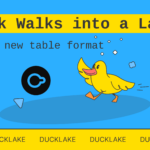
HashiCorp Terraform 1.7 is here, bringing exciting new features to streamline your infrastructure management workflows. This update focuses on improving testing capabilities and state manipulation, empowering developers and operators alike.
Revolutionizing Terraform Module Testing
Terraform 1.7 introduces groundbreaking test mocking functionalities within the Terraform testing framework. This allows developers to simulate various scenarios without actually creating real infrastructure or requiring credentials. This is particularly beneficial for testing cloud resources with lengthy provisioning times, such as databases.
Test mocking offers two key features:
- Mock Providers: Simulate provider behavior by generating fake data for computed attributes. This lets you create flexible test suites by combining real and mocked providers.
- Overrides: Modify specific instances of resources, data sources, and modules. This helps reduce test execution time, simulate outputs for child modules, and diversify data sources for testing various situations.
Enhanced Testing Capabilities
Beyond mocking, Terraform 1.7 offers additional enhancements to the testing framework:
- Reference variables and run outputs within test provider blocks.
- Leverage HCL functions in variable and provider blocks.
- Load variable values for tests from dedicated
.tfvarsfiles.
For a comprehensive overview of testing improvements, check out the updated “Testing HashiCorp Terraform” blog post.
Streamlined State Management with Config-Driven Removal
Terraform 1.7 introduces a safer and more efficient way to remove resources from your state with the removed block. This addresses limitations of existing state manipulation commands, such as single-resource operations, local execution, and immediate state changes.
Here’s why you might want to remove a resource from state without destroying it:
- Moving resources between workspaces
- Cleaning up after failed deployments
- Handling refresh failures caused by manual changes
- Managing provider deprecations and upgrades
The removed block offers several advantages:
- Bulk Removal: Remove multiple resources simultaneously.
- Plannable Operation: Preview the impact of removal before modifying your state.
- Lifecycle Control: Prevent the underlying resource from being destroyed.
Seamless Integration with Terraform Cloud
Config-driven removal seamlessly integrates with Terraform Cloud workflows, including VCS-driven workspaces. Additionally, Terraform Cloud will soon visually display removal actions alongside other plan activities in structured run outputs.
Improved Import Block Functionality
Terraform 1.7 enhances the import block by allowing the use of for_each loops for expansion. This eliminates the need to write separate import blocks for each resource instance.
Getting Started with Terraform 1.7
To explore the complete set of features and enhancements in Terraform 1.7, refer to HashiCorp Terraform 1.7 changelog. Here are some additional resources:
- Download Terraform 1.7
- Sign up for a free Terraform Cloud account
- Upgrade Guide for Terraform 1.7
- Hands-on tutorials at HashiCorp Developer














